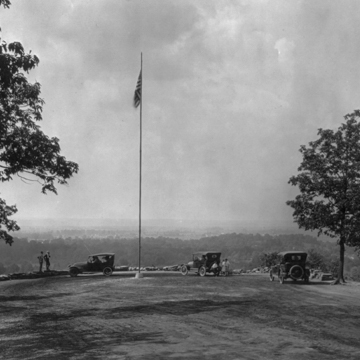The 739-acre Iroquois Park is the largest in Frederick Law Olmsted’s Louisville park system. Built on a steep hillside covered with an old-growth forest, Iroquois Park was promoted by Olmsted as “Louisville’s Yellowstone.” It has an oak savannah, which Olmsted planted with prairies grasses, and a low wood floor that is full of native sweet gum trees and tulip poplars. Roads and footpaths throughout the park provide scenic vistas and panoramic views. In 1938, the Works Progress Administration constructed the 2,000-seat Iroquois Amphitheater, which underwent extensive renovations and the addition of a partial roof in 2003.
References
Haragan, Patricia Dalton. The Olmsted Parks of Louisville. Lexington: University Press of Kentucky, 2014.
Rademacher Susan M. “A Living Legacy: Louisville’s Olmsted Landscapes.” In Louisville Guide,edited by Gregory A. Luhan, Dennis Domer, and David Mohney. New York: Princeton Architectural Press, 2004.




















